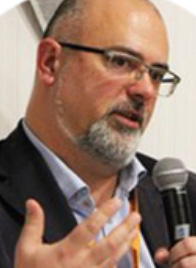
October 17th, 2018
Dr. Pablo Garcia Tello offered an interview about an educational student challenge initiative in aviation engineering proposed by EASN, ESA and CERN.
Q1. What is this initiative about?
This is a student initiative. Its goal is to enhance the collaboration of students across the World triggered by an inspiring and ambitious engineering challenge.
Q2. What is the challenge?
Coming up with a conceptual design for an economically viable 300 passenger hypersonic aircraft.
Q3. Who are the initiators and what do they bring?
The initiators are EASN, ESA and CERN. Each one of them is contributing with their respective expertise. EASN fundamentally brings a great academic network linked to aeronautics, ESA brings the expertise accumulated over the years in similar projects and CERN IdeaSquare brings the expertise on handling large collaborations.
Q4. Different projects have been already developed related to Super/Hyper sonic aircrafts. Is this initiative competing with them?
Absolutely not. The goal of this initiative is not to compete or question existing or future projects. It is to contribute especially from the academic perspective.
Q5. What is the envisioned outcome?
The envisioned outcome could be a journal type article or report containing the findings of the exercise. An additional article is envisioned analyzing the collaboration methodology as such. Anyone contributing to the initiative will be in the list of authors.
Q6. Is this initiative open to anyone?
Yes, the initiative is open to anyone willing to join.
Q7. Will there be restrictions in the access to the information generated or shared?
As an academic exercise in nature no restrictions are foreseen regarding information sharing among participants or with organizations just interested in the progress. Each participant decides which information (s)he would like to share under this premise.
Q8. Why a 300 passenger economically viable hypersonic aircraft?
Because it sounds as a dream challenge in which students will be willing to participate actively. Also, besides of being driven by aircraft related engineering problems, this initiative entails thinking about many other subjects in a synergistic point of view such as business model, airport infrastructures, passenger experience, etc.
Q9. How this initiative will develop?
It is envisioned to take place in three phases. The first one is the creation of a data repository platform structured around the main areas to be addressed. The second phase will analyze the content of this repository and start drafting the main elements of the conceptual design of the aircraft and related factors. The third phase will draft the conceptual design itself.
Q10. How much time will it take?
Due to the academic nature of the initiative the initial time estimate would be around 5 to 6 years.
Q11. Is funding contemplated?
The spirit is that funding would be a very nice to have but not a must have. Therefore existing resources should be put to use on a voluntary basis as much as possible (e.g. student thesis available or foreseen, articles published in open access journals, etc). Each participant or group of participants is very much encouraged to seek for funding supporting its efforts. The initiators also will investigate the possibility of applying to EU funding for the benefit of the participants.
Q12. Are there already any steps taken?
Yes, the initiative has been presented at the 6th EASN International Conference https://indico.cern.ch/event/570268/ and the built collaborative platform has been presented at the 8th EASN-CEAS International Workshop in Glasgow. Also Working Group leaders have been identified for the differed areas to be addressed (Design & Integration, Aero (thermo) dynamics & protection, Materials & structures, Systems, Flight Controls & Avionics, Propulsion ? Combustion, Environmental issues and Operation, Logistics and Business).
Q13. What are the next steps? How can I collaborate?
EASN will make soon available across its network the names of the different Working Group leaders as well as the web link to the platform. You should contact the Working group leader to receive indications on the best way to collaborate.